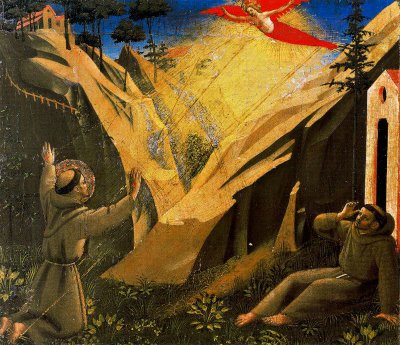At the end of the last century, both neuroscience and cognitive science made incredible, possibly revolutionary, advances into our understanding of the mind, of how the brain might work, of how we perceive, understand and interact with our environment. The human brain is the most complex biological object on this planet, and although current science has made discoveries on an order of magnitude greater than what was known in the past, it has just begun to scratch the surface of what may be, in the end, something that is not totally quantifiable. Never the less, what I have discovered so far is both exciting and revealing.
One of my reasons for reconsidering the aesthetic experience was that I believe that the relative deprecation of the visual in post-structuralist (postmodernist) critical theory was an unfortunate and incorrect decision.
Over the ensuing year I shall try to present an alternative course of critical thought. I shall primarily confine my discussions to painting, since I have been a painter for several years and over the course of my practice I have devoted a considerable amount of thought to what it is I do. In addition, I spent an eight year period at the turn of the century working for a digital imaging software company, there was a paucity of time to paint and no time at all to keep up with what was going on in the ‘art world’. I believe this cultural sabbatical allowed me time to meditate upon painting and what we call art without embedding myself in a pre-established critical viewpoint. At the end of this period, I felt it would be interesting to investigate the topic from a fresh point of view, one based upon my prior experience but also like one I might have naively assumed as a young artist.
The purpose of this commentary is to foster a different course of intellectual inquiry, one which is relatively general in its scope, one which is inclusive rather than exclusive. In some ways it is an exercise of thinking out loud with all its vulnerabilities. The reader should be forewarned that much of what I intend to say will be an intellectual speculation, prone to meandering, and subject to change as I continue my research.

Fra Angelico, 1440, "Saint Francis Receives the Stigmata"
Tempera on wood panel. 11 x 13 in., 27.5 x 33 cm. The Vatican Picture Gallery.
Tempera on wood panel. 11 x 13 in., 27.5 x 33 cm. The Vatican Picture Gallery.
To begin, I want to briefly make some personal observations on what I consider are some of paintings attributes.
Painting is a way of visually presenting information as a form of communication. For the moment, I would like to counsel the reader to accept a broad definition for my use of the two words, ‘information’ and ‘communication’. As we progress, I will take the time to examine their meaning in more specific ways which I believe they pertain to painting.
Painting is about thinking.
Painting is about feeling.
Painting is about seeing.
Painting is dependant on the visual for its power of communication, this makes the visual component a primary point of interface. A painting which fails visually becomes problematic even though it may embody ‘interesting ideas’ or an attempt to ‘express emotions’. Never the less, the thinking and feeling aspects of a painting, when expressed successfully visually, can create a richer and more complex and empathetic experience for the viewer.
Painting makes things stand still. We live in a cultural environment overflowing with images, moving images, and images seen as we are moving. Painting stops the movement to afford the observer a moment for contemplation or meditation. This may seem obvious, but in a visually hyperactive world, paintings long unbroken history affords it a special place among the symbolic objects of our culture.
A painting is just a painting.